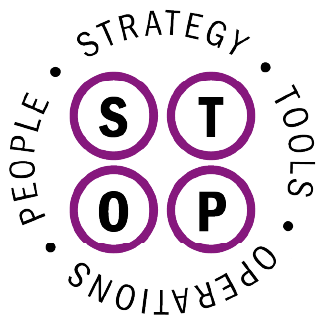We move on from Strategies to Tools or even better yet, TOOLING, in our S.T.O.P to GO series.
Remember, S.T.O.P. is actionable and a crucial step in closing GAPS within any productive environment.
S – Strategies
T – Tools
O – Operations
P – People
The use of tools is essential for efficiency, productivity, and communication, but there are often gaps in how these tools are selected, implemented, understood, or integrated.
7 Reasons Tooling is so Important:
- Strategic Alignment and Coherence
- Efficiency and Automation
- Communication
- Data Management and Analysis
- Collaboration
- Skill Enhancement and Training
- Administration & Compliance
If this seems so straightforward, why do tool GAPS continue to persist in the workplace?
Common Gaps with Tools in the Workplace & How to Address Them
Sacrificing Strategy to Fit the Tool
The most damaging gap occurs when businesses mold their strategy to fit into a tool. Instead, align tools with strategy.
Lack of Proper Training
Insufficient training leads to redundancy, underutilization, or misuse of tools. Employees need comprehensive, ongoing training.
Tool Overload & Fragmentation
Disconnected platforms create confusion and inefficiencies. A unified platform ensures seamless workflow and prevents information silos.
Integration Issues
Tools that don’t integrate smoothly create operational gaps. Choosing compatible systems is essential for continuity.
Customization
When tools don’t align with organizational needs, employees may create workarounds. Opt to close this GAP with customizable solutions.
Data Security
Gaps in security can expose sensitive data. Regular audits ensure your tools meet compliance and protect your organization.
Resistance to Change
The most useful tools can fail if employees resist change. Implement change management strategies to improve adoption.
Identifying and closing tooling gaps is essential to fully optimize and execute your strategy effectively.



